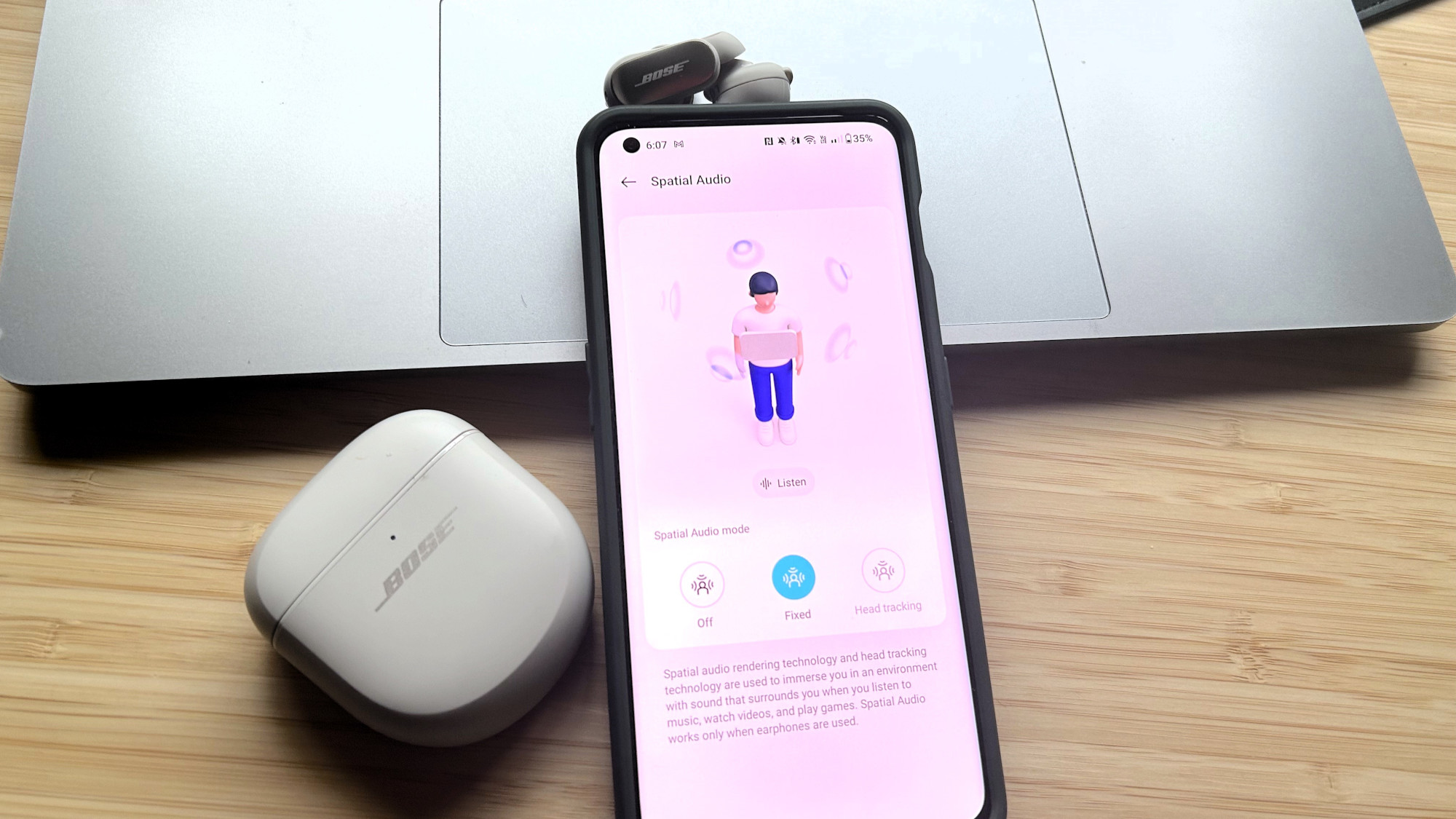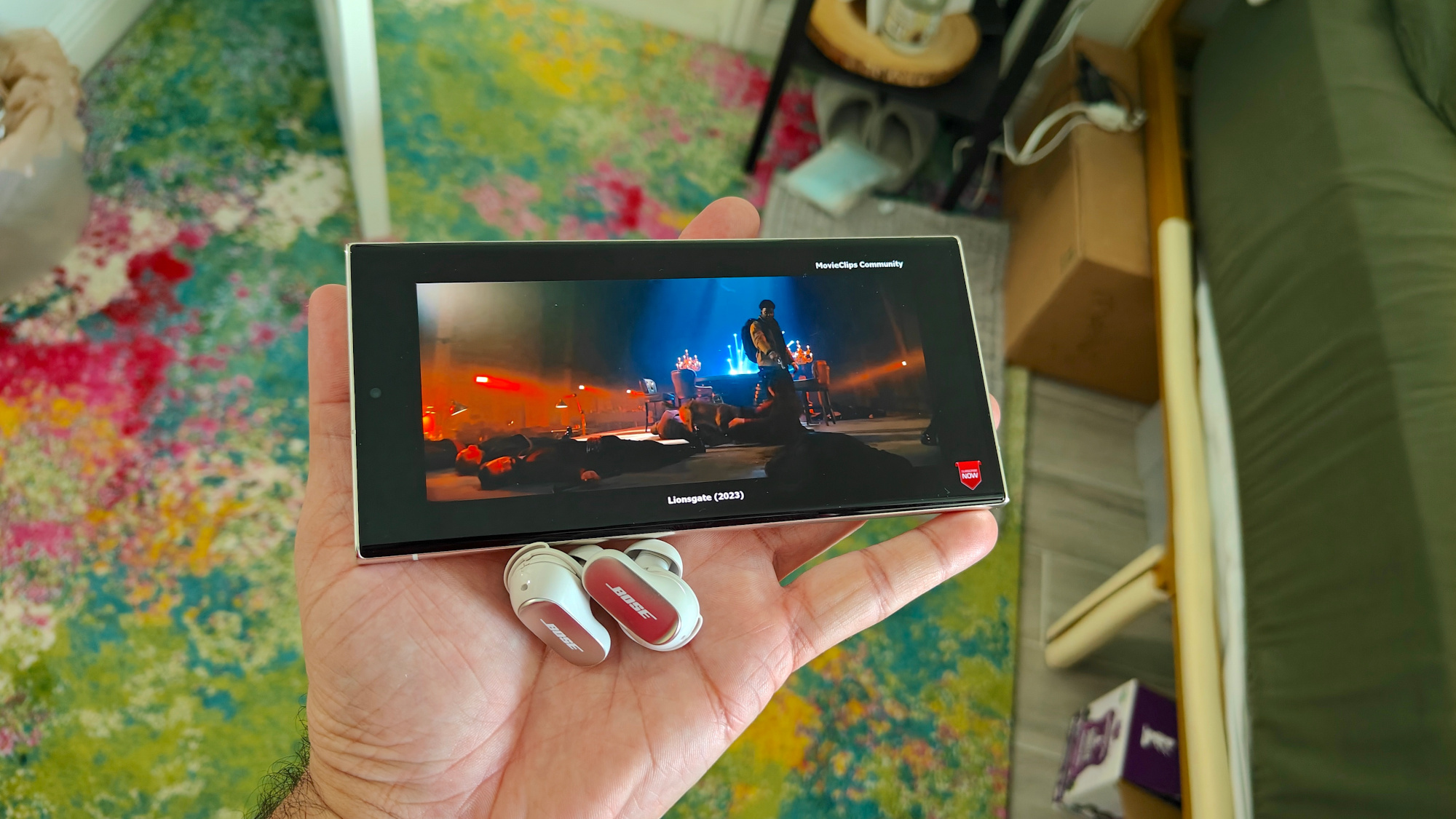I just tested the Bose QC Ultra Earbuds — and this feature is a game changer

One of the strongest new features of the new Bose QuietComfort Ultra Earbuds ($299 / £279 / AU$429) is Immersive Audio. As with many of the best wireless earbuds that support spatial audio such as Apple's AirPods Pro 2 earbuds and AirPods Max headphones, and the best Sony headphones that all support Sony 360 Reality Audio, Bose has finally entered the 3D sound experience arena with Immersive Audio.
As the first arrival in the company's next-gen Ultra line of earbuds and headphones, the Bose QuietComfort Ultra Earbuds are the launch pad for the all-new Immersive Audio mode. And I've been really impressed by its great sonic performance with some of the best head tracking I’ve experienced so far.
However, there’s a special trick that Bose's version of Immersive Audio performs, which I’ve only seen on one other portable audio product: the Yamaha YH-L700A wireless headphones. It’s a game-changer that needs to be adopted by all wireless earbuds in the future.
How does Immersive Audio work?

Bose is secretive about the inner workings on their technologies. Why do you think no one has matched their award-winning active noise cancellation yet that sees them rank top in the best noise-cancelling headphones and earbuds? What we do know is that the company’s spatial audio operates differently than Sony and all Dolby Atmos-powered versions.
Alternatives like Apple’s Spatial Audio and Samsung’s 360 Audio use 5.1, 7.1 and Dolby Atmos signals, while also applying directional audio filters to manipulate the audio signal to place specific sounds within a 3D soundscape. Sony’s 360 Reality Audio employs a technique called binaural rendering, which simulates how we hear real-life sounds by tricking the brain into “thinking different sounds are coming from different origin points.”
Bose's Immersive Audio manages to keep sound positioned right in front of you. It accomplishes this effect through an onboard IMU (Inertial Measurement Unit) and newly developed digital signal processing software, creating a wider soundstage with multi-dimensional presentation. Two settings are available: Still and Motion. The former accurately positions sound to your head movement, while the latter puts sound in front of your face to hear more naturally on the go.
What makes Immersive Audio a game-changer?

Two words: universal compatibility. Immersive Audio works with all stereo content. Processing is done directly on the wearable, so there’s no dependency on other hardware. In addition, the feature isn’t tied to surround-sound technologies like Dolby Atmos or particular music streaming platforms or tiers.
Get instant access to breaking news, the hottest reviews, great deals and helpful tips.
That means you can enjoy quality 3D sound with practically every form of media – music, movies, podcasts, and video games — on any Bluetooth-enabled media device. I’m talking the best phones, MP3 players, personal computers, tablets, and even home sound systems that accept a Bluetooth dongle.
Immersive Audio can be enabled on the QuietComfort Ultra Earbuds and the upcoming $429 QuietComfort Ultra headphones, which are set to launch in October.
Are there other universal spatial audio earbuds?

Not really. The only other wireless earbuds we know of that come close are the Creative Outlier Pro ANC, which is one of several wireless earbuds under $50 that beat the AirPods on sound. They use Creative’s Super X-Fi technology to give music a wider, more realistic presence. Unfortunately, there are two caveats: Super X-Fi can only be used in the SXFI app and with music files stored on your mobile device.
Just another reason why Immersive Audio is so innovative.
Is the future of spatial audio through smartphones or wireless earbuds?
I ask this question because mobile giants like Google and OnePlus are attempting to undercut headphone makers by offering their own spatial audio feature for free on their latest flagship phones.
Google’s spatial audio is one of several underrated wireless earbuds features you should be using, though OnePlus’s version performs better. Both formats also work with any pair of wired or wireless headphones/earbuds.
Currently, neither offering is as accurate or immersive sounding as Apple, Bose, Samsung, or Sony’s 3D audio technology. Time will tell if Google, OnePlus, and other smartphone manufacturers can perfect spatial audio on their handhelds. Until then, Bose has given us the most convenient and intuitive option for 3D audio listening on all devices and platforms.
More from Tom's Guide
- The best Bose headphones in 2023
- Bose QuietComfort Ultra Headphones hands-on — this is a new level of immersive audio
- The best wireless earbuds 2023 tested and rated
A lifestyle journalist with an affinity for consumer products, Alex has over a decade of experience and has worked with popular publications such as Complex, Thrillist, Men’s Health, Gear Patrol, AskMen, and Hoop Magazine. He currently focuses on audio, reviewing the most coveted headphones in the market for both Tom’s Guide and Laptop Magazine.

